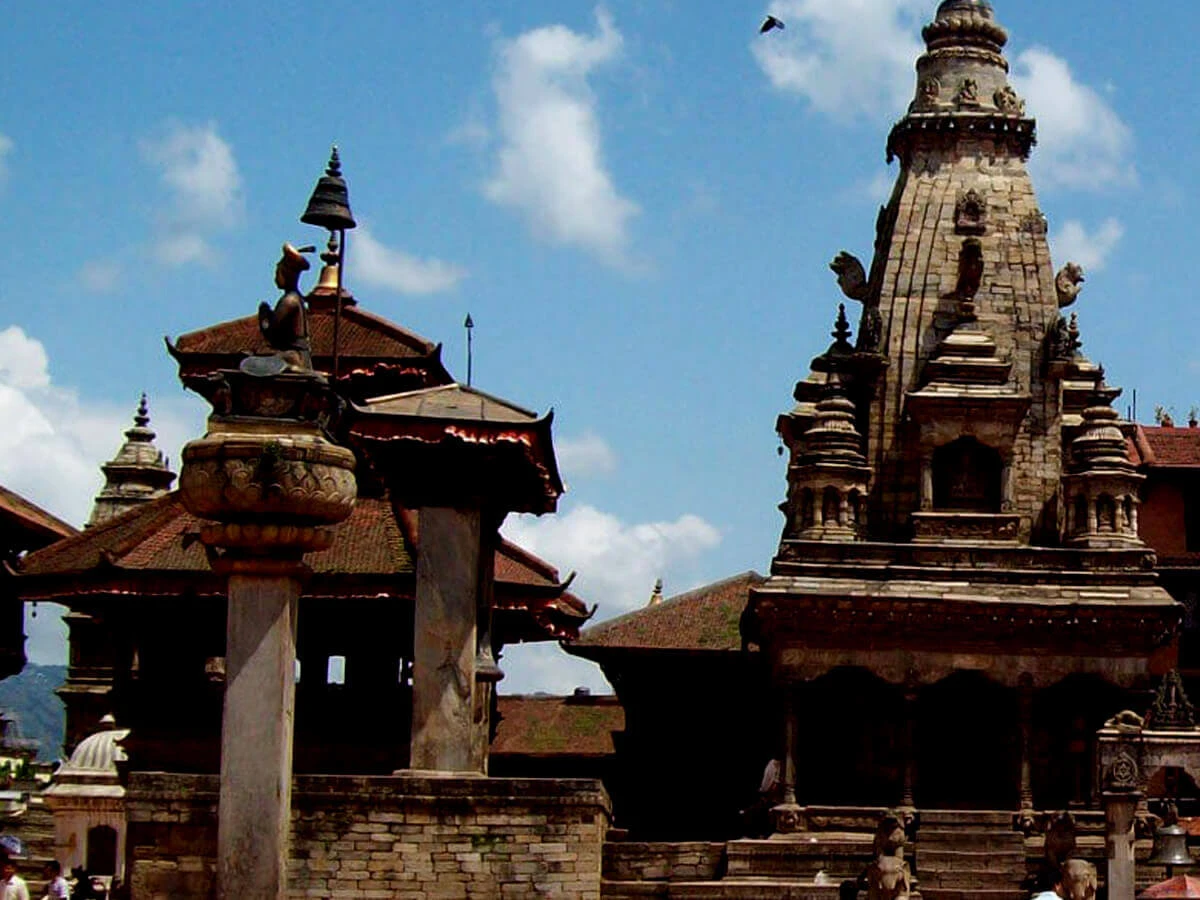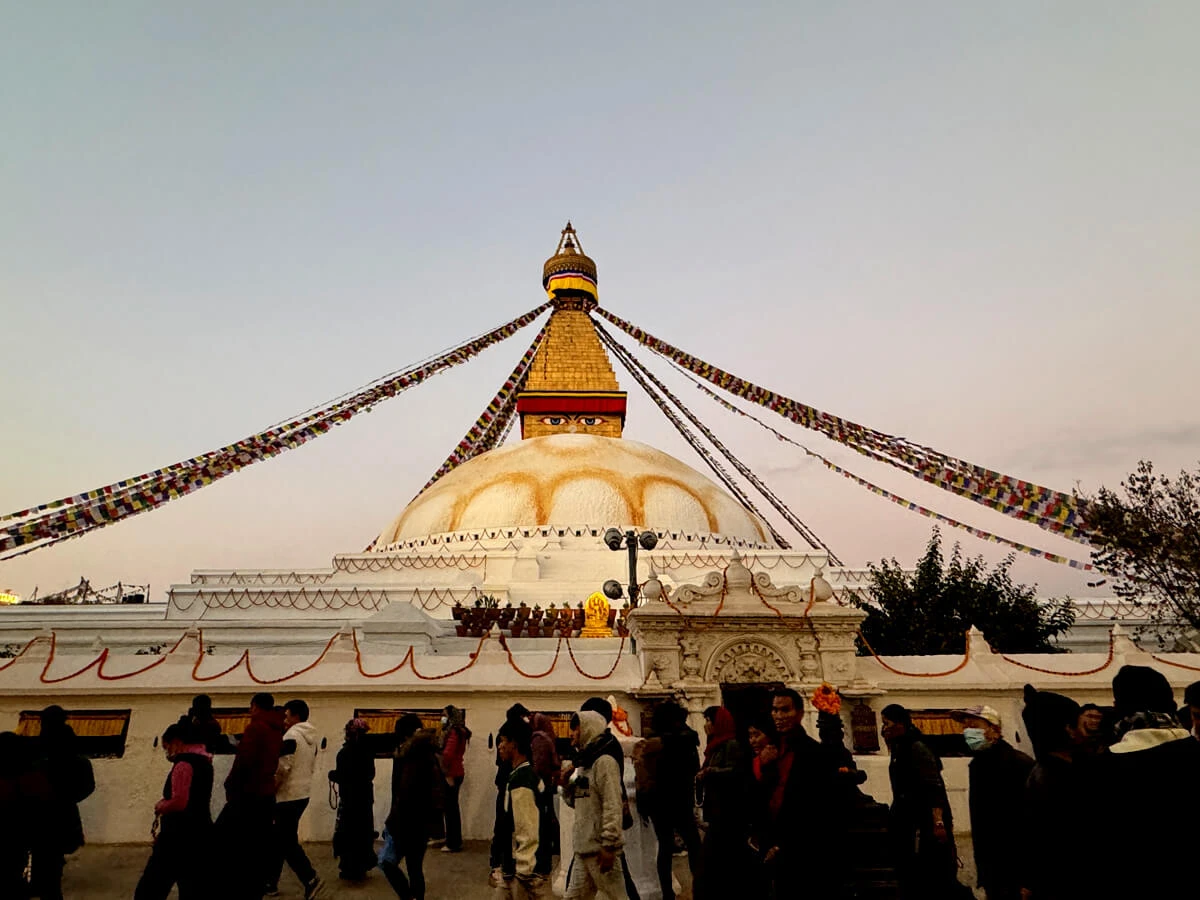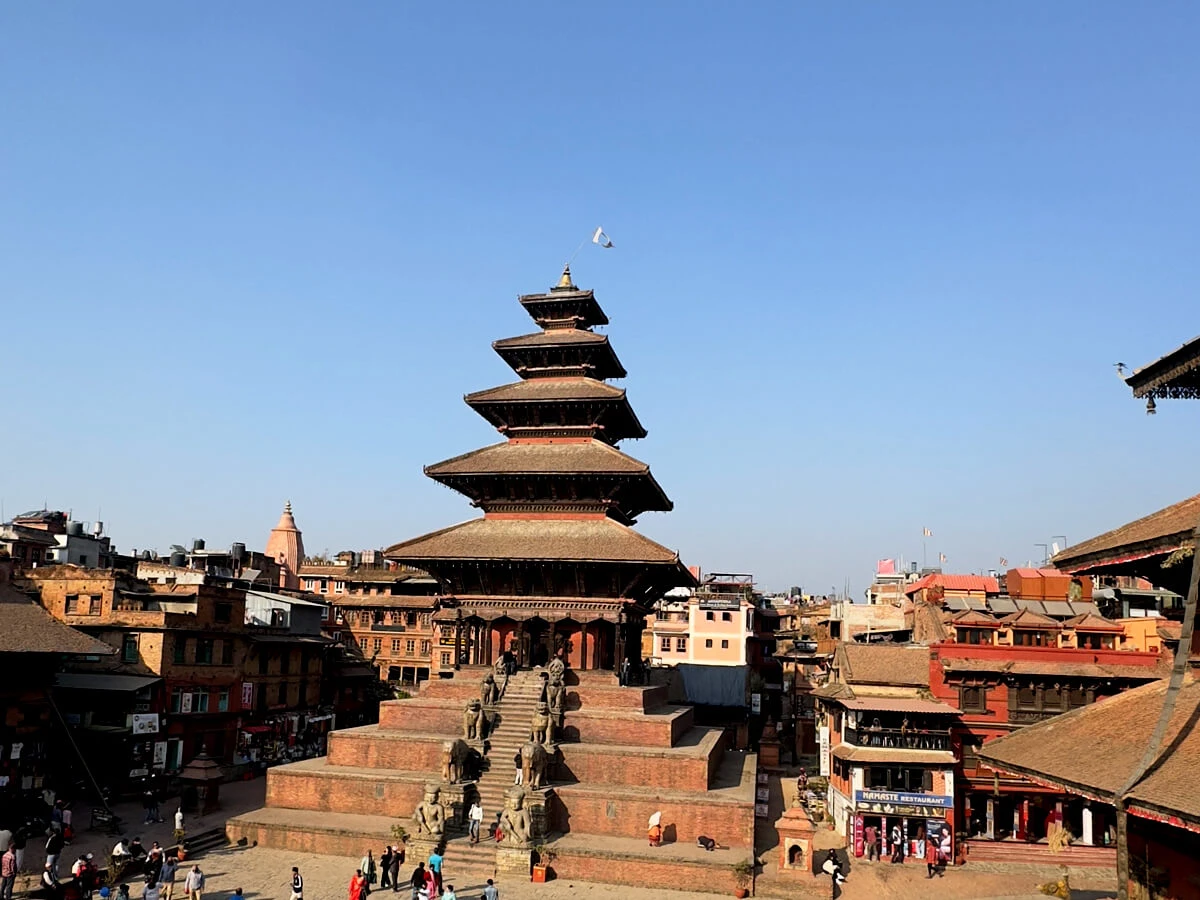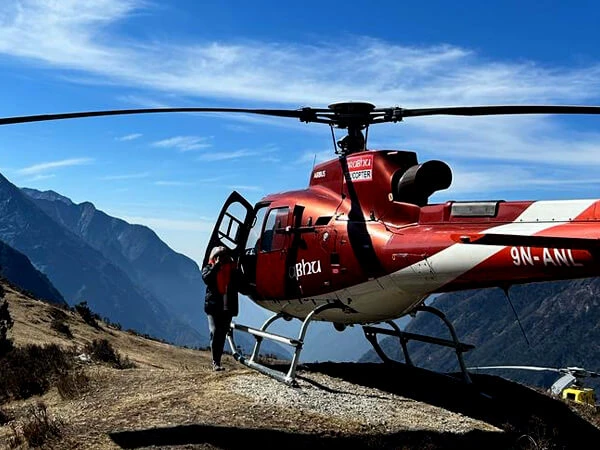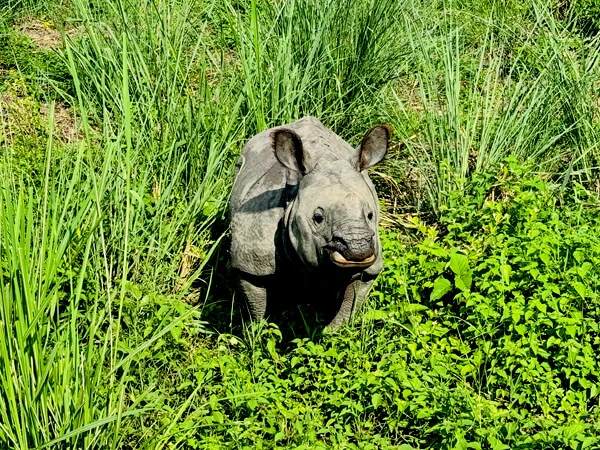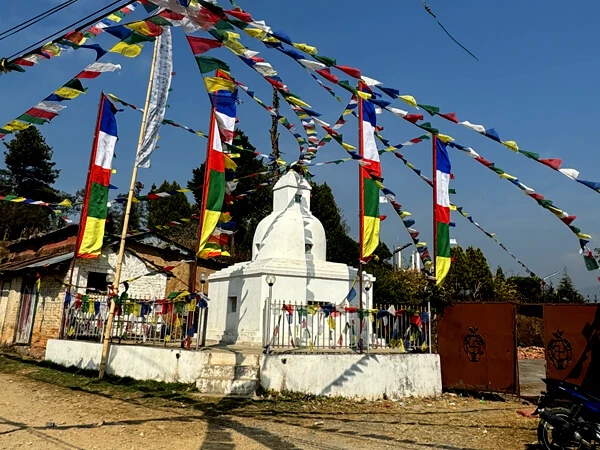The Kathmandu Valley Tour 2026 is a 2-day cultural and heritage tour that includes visits to Nepal's well-known UNESCO World Heritage Sites. Places like Pashupatinath Temple, Swoyambhunath Temple (Monkey temple), Boudhanath Stupa, Changu Narayan Temple, Kathmandu Durbar Square, Patan Durbar, and Bhaktapur Durbar Square. You can enjoy the flexibility of a customizable itinerary as you want. The Kathmandu valley tour cost includes an experienced guide, private transportation, and lunch, while entrance fees are extra. The best time to enjoy this short tour is in summer and autumn, filled with history and culture.
2 Days Kathmandu Valley Tour 2026
Trip Facts
Kathmandu is a heritage valley decorated with ancient culture, history, crafts, sculpture, and traditions. The Durbar Square, Stupas, and Temples are a testament to Kathmandu’s cultural authenticity and its role as a sincere witness to the city's civilization, eras, regimes, and development. UNESCO (United Nations Educational, Scientific, and Cultural Organization (UNESCO) listed Kathmandu Valley as a world heritage site along with Sagarmatha National Park in 1979. Initially, these two sites, Kathmandu and Sagarmatha National Park, were listed on the UNESCO World Heritage Sites. Later, Chitwan National Park (in 1984) and Lumbini (in 1997), the birthplace of Lord Buddha, were added to the UNESCO World Heritage Site from Nepal.
Travelers from around the world ensure that they explore Kathmandu Valley while trekking in Nepal's trekking regions, working in Nepal, or taking a casual trip to Nepal. Likewise, the visit to the 7 Heritage sites of Kathmandu Valley is a mandatory thing one does.
Kathmandu Durbar Square
Kathmandu Durbar Square is also popular as Hanuman Dhoka as well as Basantapur. Hanuman Dhoka Palace was the former royal palace of the Malla Kings and was later passed on to the Shah Dynasty with 17th-century stone inscriptions in 15 different languages. Kumari Ghar, the house of the only living Goddess Kumari, is also located in Kathmandu Durbar Square. Kathmandu Durbar Square surroundings include various monuments and temples holding the artifacts of ancient architecture, craftsmanship, culture, like Hanuman Dhoka, Panch Mukhi Hanuman Temple, Hanuman Statue (17th century), Nine Storey (Nautalle Durbar) Basantapur tower, Basantapur Dabali, Gaddi Baitha, and if you want to study further information, click here for more about Kathmandu Durbar Square.
Swoyambhunath Temple (Monkey Temple)
Temple/ Monkey Temple is regarded as one of the oldest temples in Nepal. Literally, “Swoyambhu” means self-existent or self-arisen. According to some stories/legends, Kathmandu Valley was once a lake (geological evidence supports this), and the hill now topped by Swoyambhunath rose instinctively from the water; hence it is named Swoyambhu. Swoyambhunath Temple has the domed stupa (Swoyambhu Maha chaitya) in the center on the top of the hill, whereas there are other temples and religious assets: Pratapura Sikhara, Anantapur Temple, gold-plated Vajra (thunderbolt), Further More about Swayambhunath Temple.
Pashupatinath Temple
Pashupatinath Temple is the temple of Lord Shiva and one of the four most important religious sites in Asia for devotees of Shiva, spread across 246 hectares of land. Pashupati means lord of all the animals, which was also the incarnation of Lord Shiva. The temple is on the bank of the Bagmati River, stretching on both sides of the Bagmati. The main temple of Lord Shiva is of pagoda style with a golden spire, and the Pashupatinath area is enriched with other temples, shrines, stories, and beliefs, with around 492 temples, 15 Shivalayas (shrines of Lord Shiva), and 12 Jyotirlingas (Phallic shrines). Find out more about Pashupatinath Temple.
Bouddhanath Stupa
Bouddhanath Stupa is the 36-meter-tall giant mandala or diagram of the Buddhist cosmos. The whitewashed dome, gilded tower painted with the all-seeing eyes of Buddha on all four sides, and flying colorful flags make the Bouddhanath Stupa a perfect blessing that spreads peace, joy, and enlightenment to its devotees. The construction serves in essence as a three-dimensional reminder of Buddha’s path towards enlightenment. Read more about Boudhanath Stupa.
Patan Durbar Square
Patan Durbar Square is another marvelous example of history and culture, which also has a distinct place for work in the field of arts and architecture. Patan Durbar Square offers myriad opportunities for visitors willing to study and research the artistic and architectural masterpieces, history, and culture of Lalitpur. The area is widely popular for woodcarving and especially metal crafts, and you can hear the sounds of craftsmen working on statuettes or ornaments. Patan takes pride in producing great thangka and Pauba painters whose works are demanded in many countries.
Besides, Patan Durbar Square is full of Hindu temples, Buddhist monuments, bronze gateways, guardian deities, and shrines noted for their exquisite carvings. The major attraction of Patan Durbar Square.
Changu Narayan Temple
Changu Narayan Temple is the temple of the Hindu god Vishnu, who is also called Narayan, and the temple is established at Changu (Champak Hill); thus, it is named Changu Narayan Temple. Changu Narayan Temple is built in a two-tiered pagoda style, the main shrine guarded on all sides by pairs of real as well as mythical beasts: lions, elephants, ram-horned griffins, and Sarabhai (part lion part bird), roof struts having wooden carving images of Vishnu’s avatars, tantric goddesses, and more about Changu Narayan Temple.
Bhaktapur Durbar Square
Bhaktapur Durbar Square was the royal palace of the Bhaktapur Kingdom, and the monuments represent the history and traditions of Medieval Nepal, Nepali culture, customs, and unique arts of wood and pottery. Unlike Kathmandu Durbar Square and Patan Durbar Square, Bhaktapur Durbar Square and its locals resisted rapid changes and preferred to follow ancient culture and traditions without upgrading them. A large number of locals can be seen in their traditional Newari attire in black and red colors. The natives widely practice pottery. Bhaktapur Durbar Square is enriched with monuments and temples: the 55 Window Palace, the Nayatapola Temple, and the Golden Gate.
Considering the enthusiasm of travelers, the Nepal Adventure Team arranges the 2-Day Kathmandu Valley Tour 2026: Explore UNESCO World Heritage Sites. The experienced guide of the Nepal Adventure Team leaves no stone unturned to please travelers with the information, importance, and mythology related to those World Heritage Sites. If travelers are short of time, you can visit a few of the Heritage sites of Kathmandu with the support of the Nepal Adventure Team. You can customize your tour as per your flexibility and comfort. If you are physically active and interested in adventure, you can also enjoy the Kathmandu Valley Cycling Tour: 1-Day Cycling to UNESCO World Heritage Site. Here, you explore Kathmandu Valley on a bicycle with the support of an experienced guide from the Nepal Adventure Team.
The Best Time for Kathmandu Valley Tour
Kathmandu is a tourist hub, and the valley can be visited at any time of the year, although each season has its charm. The best seasons to visit are late September to mid-December because it has clear skies and moderate temperatures. Nice festivals such as Dashain and Tihar occur in this season, and for next best season is mid-March to the end of May because flowers bloom in this season, the weather is also very good, and attractions like trekking and cultural sightseeing can be done. December to February is winter, but it has a calm environment with appropriate herders and clearer mountain views than in summer. Although drips are common during the remaining five months of monsoon (June to August), most tourists get to feast their eyes on natural green sceneries and the relatively calm atmosphere of the valley. The fact that people set a joke that all seasons are preferable also attests to the fact that Kathmandu Valley is always interesting because of its good cultural and nature tourism potential, and colorful traditions.
Things to Remember Before the Kathmandu Valley Tour 2026
This is important regarding your schedule, expectations, sanitary and health conditions, and regulations for each of the places you are likely to visit. The most important aspect, however, would be to show respect to the local people and their environment. The culture here is quite preserved, and being closely related to religious places and beliefs, one should avoid revealing clothing, any forbidden behavior, or actions that might be seen as rude. Also, there is a way to copy identification and travel permits, and other documents needed when and where they are required. Depending on your health condition, carry enough medications you might require because it is difficult to procure some medications in local shops. In conclusion, these are some of the most important steps, which will help every traveler to make a non-problematic and rather respectfully oriented trip in the fascinating area of Kathmandu Valley.
Highlights
- Exploring Kathmandu Valley (Kathmandu + Bhaktapur + Lalitpur), UNESCO World Heritage Site
- 3 Durbar Square: Kathmandu Durbar Square, Bhaktapur Durbar Square, Patan Durbar Square
- 2 Divine Buddhists Site: Bouddhanath Stupa and Swoyambhunath Temple
- 2 Eminent Hindu Temples: Pashupatinath Temple and Changu Narayan Temple
- Close observation of history, architecture, and local culture
- The era extended the mythology and religious beliefs of Nepal
Outline Itinerary
2 Days Kathmandu Valley Tour 2026 Itinerary
Discover the enchanting beauty of the Kathmandu Valley over two lovely days, including the appreciation of the Nepalese art and culture. Immerse yourself in the culture, history and ambience of this rich and diverse area in terms of architecture and cultural interactions!
Sightseeing to 4 Heritage Site of Kathmandu Valley
For the 2 days, Kathmandu Valley Tour: Explore UNESCO World Heritage Site, representative of Nepal Adventure Team will pick you up from your hotel. Since you will be exploring Kathmandu and the 4 Heritages of Kathmandu valley, your tour begins early in the morning. The tour begins after your breakfast schedule. On this day, you will visit Bouddhanath Stupa. Secondly, you will have a tour of Pashupatinath Temple, temple of Lord Shiva, on the bank of Bagmati River. Though non-Hindus are not allowed to the main temple of Lord Shiva, visitors can visit other monuments, shrines, and large surroundings of Pasupatinath which carries the Hindu mythology and religious stories. Then, you will visit Kathmandu Durbar Square after having a lunch break. Kathmandu Durbar Square is situated in the center of Kathmandu city. Kathmandu Durbar Square is rich with Kumari Ghar, temples, and palaces. You will also observe the Kumari, the Living Goddess of Nepal. And today’s wrap up site is Swoyambhunath Stupa located on the top of the hill with the panoramic view of Kathmandu Valley. After observing Swoyambhunath and the beautiful sunset, you will be dropped at your hotel.
Sightseeing to 3 Heritage Site of Kathmandu Valley
Following the schedule of the previous day, your tour to 3 heritages of Kathmandu Valley begins. Firstly, you will head towards Lalitpur to visit Patan Durbar Square which showcases the ancient architecture, crafts, and sculpture through its temples, palaces, and monuments. Secondly, you will go to Changu Narayan Temple, the temple of Lord Bishnu, far away from the city and close to the woods. Finally, your 2 Days Kathmandu Tour: Explore UNESCO World Heritage Sites end by visiting Bhaktapur Durbar Square which is also an amazing site of ancient monuments and palaces. These craftsmanship and architecture reflect the culture and civilization with its own stories, myth, and importance. You will be drop at the hotel after the pleasing historical tour of Kathmandu valley and its ancient heritage.
2 Days Kathmandu Valley Tour 2026 Cost Details
Includes
- All ground transportation by private vehicle
- An Experienced, English-speaking, and (Other Language if required) speaking, and government license holder Tour guide
- First Aid medical kit bag during the tour
- All Government VAT and Taxes
Excludes
- All Monument and entrance fees for all 7 UNESCO World Heritage Sites
- All Melas, and extra personal expenses and equipment
- Tips to guide, and a driver
Dates & Availability
Please be reminded that there will be fixed timings for pickups each day to ensure we make the most of our time exploring this beautiful region. Make sure to be ready at the designated pickup point at the scheduled time. We look forward to providing you with an unforgettable experience as we delve into the rich history and vibrant culture of the Kathmandu Valley.
We also provide private or customized tours based on specific needs of the travelers. We orgazise trips on a everyday basis, however you can go through the following dates to pick a suitable date for yourself.
Essential Information
Kathmandu Valley 2 Days Tour Packing List
Here is a list of items you might want to ensure before your 2-day Kathmandu Valley tour.
- Comfortable Walking Shoes: Essential for exploring the historical sites and walking around the city.
- Comfortable Clothing: Lightweight and breathable fabrics. Include layers as temperatures can vary.
- Modest Clothing: To respect local customs, especially when visiting temples and religious sites.
- Rain Jacket or Umbrella: If traveling during the monsoon season.
- Personal Identification: Passport, visa, and any necessary travel permits.
- Travel Documents: Copies of your itinerary, hotel reservations, and emergency contacts.
- Cash and Cards: Local currency (Nepalese Rupee) for small purchases and tips; credit/debit cards for larger expenses.
- Medications: Any personal medications you require, plus a basic first-aid kit.
- Extra Snacks: Lightweight, non-perishable snacks like nuts, energy bars, and dried fruit for long days of exploration.
- Mobile Phone and Charger: For navigation, communication, and capturing photos.
- Power Bank: To keep your devices charged on the go.
- Camera: Optional, but useful for capturing high-quality photos of your trip.
- Reusable Water Bottle: Stay hydrated while reducing plastic waste.
- Sunscreen and Hat: Protect yourself from the sun, especially during daytime explorations.
- Sunglasses: Useful for sunny days and glare protection.
- Travel Guide or Map: Helpful for navigating the city and understanding the significance of various sites.
- Reusable Bag: For carrying souvenirs or additional items you might pick up along the way.
- Hand Sanitizer and Tissues: Handy for personal hygiene, especially in public places.
Guides During the Tour
When visiting the Kathmandu Valley, a good guide can add enormous value to the trip, and we ensure that we have the best. Not only do they know how the valley has looked over centuries and what vibrant cultures inhabited it, but our guides also know curious facts and stories connected to as many landmarks of the region. It helps me to find experienced tour guides who can explain the history of the buildings, explain the location of temples, and help to avoid confusion in the complex network of streets in Kathmandu, Patan, and Bhaktapur. Being locals, their knowledge of the valley means that they will not leave any significant place unnoticed and can comprehend the dramatic meaning of each place. Furthermore, our guides understand the basic needs of the tour, as you will be referred to the right restaurants, shops, and places of interest that would make your tour enjoyable. Regardless of whether you are walking through hundreds of years of history in temples and shrines, shopping in the Kalimati local markets, or appreciating the silence in the Buddha’s stupas, our guides’ main focus is to give you a detailed insight into the Kathmandu valley.
Transportation Facilities During the Tour
Transportation for the Kathmandu Valley tour is arranged in a way that caters to comfort and flexibility when it comes to group sizes. For parties of up to 3, we offer a private car service, giving visitors more liberty in choosing the places to visit and the time of visiting. For small groups of people that are not more than six in number, one can hire a jeep, which will be spacious with more comfortable than a station wagon for a small group of people. When going to a place slightly farther or for groups of up to ten people, we hire a HiAce so that all the members of the group can be in the same vehicle. For even bigger groups, we undertake the organization of transport through a large bus that will comfortably hold everyone in the group, and in addition to this, we ensure that the entire travel process is as much fun as possible. All these transport arrangements are undertaken by our company, and thus, you can travel and explore the cultural and historical attractions of the Kathmandu valley without having to worry about transport.
What Our Guests Say?
I thoroughly enjoyed my two days in Kathmandu. The kathmandu tour covered all of the major attractions, and our guide was very informative as well. Boudhanath Stupa was the special highlight...
The Kathmandu Valley 2 days Tour was an absolute delight! In just two days, we managed to visit so many incredible sites. Swayambhunath provided a breathtaking view of the valley,...
The Kathmandu Valley Tour was a whirlwind of cultural immersion. From the bustling markets to the tranquil temples, every moment was captivating in itself. Our guide was well-versed in the history...
